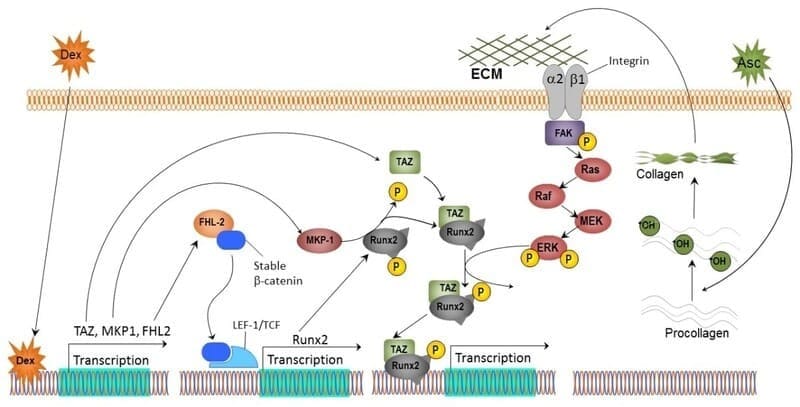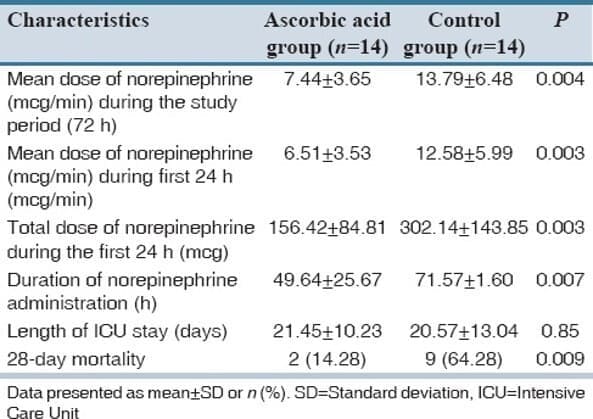 Langenbach, Fabian, et al. Stem cell research & therapy, 2013, 4, 1-7.
Langenbach, Fabian, et al. Stem cell research & therapy, 2013, 4, 1-7.
The usual osteogenic differentiation protocol for pluripotent stem cells is to treat confluent monolayers with a solution of dexamethasone (Dex), ascorbic acid (Asc) and -glycerophosphate (-Gly). This article detailed how these chemicals affect the intracellular signaling pathways that result in osteogenic differentiation of bone marrow stromal stem cells. Among them, Asc causes the production of more type I collagen (Col1), which leads to more intracellular signalling via Col1/α2β1 integrin.
Function of ascorbic acid in osteogenic differentiation
What makes Asc so essential to osteogenic differentiation is the release of collagen type I (Col1) into the ECM. For example, osteogenic differentiation of human bone marrow stromal cells (BMSCs) occurred most successfully at 50 M ascorbic acid-2-phosphate, a more stable form of Asc in conventional culture conditions.
A model was developed to explain how the ECM initiates and maintains osteoblast differentiation: (1) Osteoblasts need contact with a collagen-containing ECM to start to differentiate. (2) They stick to this ECM through Col1 and α2β1 integrin interaction. (3) Integrin ligands activate MAPK signaling networks, which transmit messages to the nucleus. (4) MAPK phosphorylates and activates Runx2 which then acts to induce osteoblast differentiation by stimulating transcription of osteoblast marker genes like osteocalcin.

 Zabet, Mohadeseh Hosseini, et al. Journal of research in pharmacy practice, 2016, 5(2), 94-100.
Zabet, Mohadeseh Hosseini, et al. Journal of research in pharmacy practice, 2016, 5(2), 94-100.
 Langenbach, Fabian, et al. Stem cell research & therapy, 2013, 4, 1-7.
Langenbach, Fabian, et al. Stem cell research & therapy, 2013, 4, 1-7.